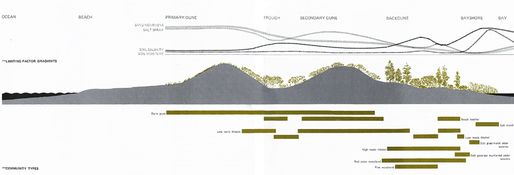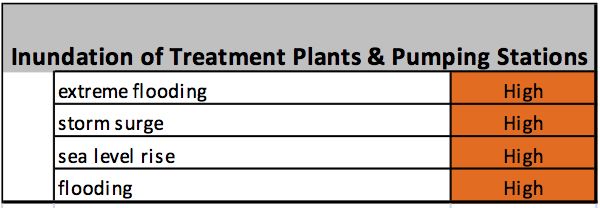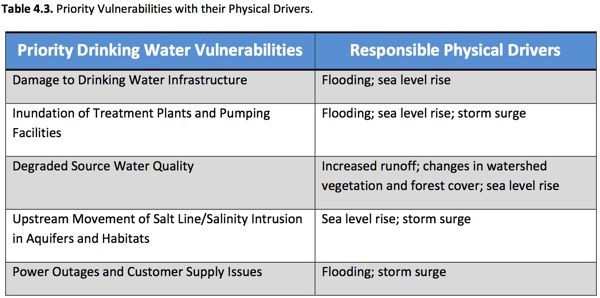Map of the Day
As Congress Contemplates A $50 Billion Federal Bailout of NY and NJ
The Coastal Barrier Resources Act15 was passed in 1982 and established the John H. Chaffee Coastal Barrier Resources System (CBRS) to minimize the loss of human life, wasteful federal expenditures, and damage to fish, wildlife, and other natural resources associated with coastal barriers, such as barrier islands. The Act defines coastal barriers as “bay barriers, barrier islands, and other geological features composed of sediment that protect landward aquatic habitats from direct wind and waves.”16 As part of the program, which is administered by the U.S. Fish and Wildlife Service, the federal government discourages development on designated coastal barriers by restricting certain federal financial assistance, including flood insurance coverage, loans, funding for U.S. Army Corps of Engineers development projects, and construction of sewer systems, water supply systems, and transportation infrastructure.
The CBRS is specifically designated on maps maintained by the Secretary of the Interior. The Secretary is directed to review and update the maps every five years to reflect the changes in size or location of any of the barriers. Nearly 1.3 million acres of land, wetlands, and water along the East Coast, Great Lakes, and Gulf of Mexico are part of the “full system unit,” with “otherwise protected areas” covering an additional 1.8 million acres of coastal barriers already held for conservation or recreational purposes. The program does not ban development in these areas; rather, it creates disincentives by denying federal subsidies and imposing the full costs of development on the developer or property owner.
The CBRA is administered by the US Fish and Wildlife Service:
What is the Coastal Barrier Resources Act?
In the 1970s and 1980s, Congress recognized that certain actions and programs of the Federal Government have historically subsidized and encouraged development on coastal barriers, resulting in the loss of natural resources; threats to human life, health, and property; and the expenditure of millions of tax dollars each year. To remove the Federal incentive to develop these areas, Congress passed the Coastal Barrier Resources Act (CBRA) of 1982 which designated relatively undeveloped coastal barriers along the Atlantic and Gulf coasts as part of the John H. Chafee Coastal Barrier Resources System (CBRS), and made these areas ineligible for most new Federal expenditures and financial assistance. Learn more …
Taxpayer Savings
In the past, certain actions and programs of the Federal government had the effect of encouraging development of fragile, high-risk, and ecologically sensitive coastal barriers. The Coastal Barrier Resources Act (CBRA) of 1982 and its amendments limit Federal expenditures and financial assistance which have the effect of encouraging development on designated coastal barriers. The result is a savings in Federal dollars, the protection of human lives, and conservation of natural resources. CBRA and its amendments do not prevent or regulate development, they only remove the Federal incentive for development on designated coastal barriers. Therefore, individuals who choose to live and invest in these hazard-prone areas bear the full cost of development and rebuilding instead of passing it on to American taxpayers. An economic study conducted by the U.S. Fish and Wildlife Service in 2002 estimated that by 2010, CBRA will have saved American taxpayers approximately $1.3 billion by restricting Federal spending for roads, wastewater systems, potable water supply, and disaster relief.
The savings estimated in this study are conservative for the following reasons: the Federal programs Congress directed the Service to examine comprise but a fraction of the Federal programs, policies, and funding sources that promote, protect, and rebuild development along our coasts; the methods the Service used to estimate Stafford Act savings assume the cost per developed acre in the entire disaster area is constant, but this is not generally the case; costs for infrastructure did not consider the geology of coastal barriers and how much more expensive it is to build in these places because they are unstable and flood prone; the Service assumed no construction occurred on wetlands, which has probably happened in some areas; the Service only considered initial, on-site construction costs, but did not assess the costs of operating and maintaining infrastructure or connecting development to existing facilities.





